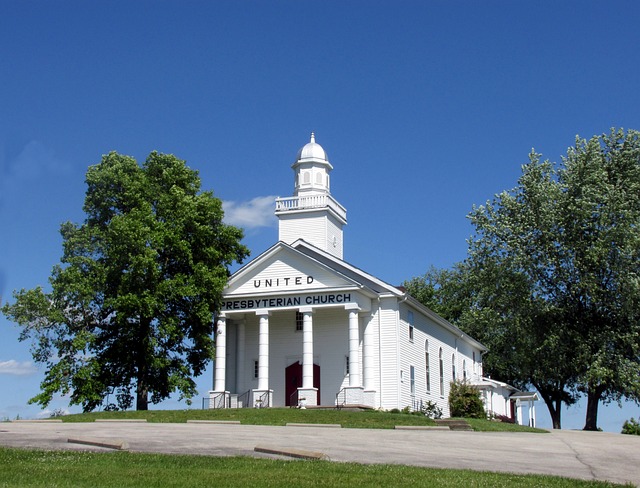Presbyterians practice baptism by either sprinkling or pouring water on the individual, rather than by full immersion or dunking.
Table of Contents
The History of Sprinkling and Dunking in Presbyterianism
Do Presbyterians sprinkle or dunk? This is a question that has sparked much debate and discussion within the Presbyterian community. To understand the answer, we must delve into the history of sprinkling and dunking in Presbyterianism.
The practice of baptism has been an integral part of the Christian faith since its inception. However, the method of baptism has varied among different denominations. In Presbyterianism, there has been a historical preference for sprinkling as the mode of baptism. This practice can be traced back to the early days of the Reformation.
During the Reformation, many Protestant denominations sought to distance themselves from the Catholic Church and its practices. One of the areas of contention was the method of baptism. The Catholic Church practiced infant baptism through sprinkling, and some reformers saw this as a departure from the biblical model of baptism.
John Calvin, one of the key figures in the Reformation, advocated for the use of sprinkling as the mode of baptism. He believed that the act of sprinkling symbolized the cleansing power of the Holy Spirit. This view was widely accepted among Presbyterians and became the prevailing practice within the denomination.
However, there were dissenting voices within Presbyterianism who argued for the use of immersion or dunking as the mode of baptism. These individuals believed that immersion more closely aligned with the biblical account of baptism, particularly the baptism of Jesus in the Jordan River.
The debate between sprinkling and dunking continued throughout the centuries, with various Presbyterian churches adopting different practices. Some churches maintained the traditional practice of sprinkling, while others embraced immersion. This diversity of practice reflects the autonomy and flexibility within the Presbyterian tradition.
In recent years, there has been a growing movement within Presbyterianism towards a more inclusive approach to baptism. Many churches now offer multiple options for baptism, allowing individuals to choose between sprinkling, pouring, or immersion. This shift reflects a desire to accommodate the diverse beliefs and preferences of congregants.
Ultimately, the choice between sprinkling and dunking in Presbyterianism is a matter of personal conviction and interpretation of scripture. Both methods have their theological justifications and historical precedents within the denomination. What is most important is the understanding that baptism is a sacrament that symbolizes the believer’s identification with Christ and their initiation into the community of faith.
In conclusion, the history of sprinkling and dunking in Presbyterianism is a complex and nuanced one. While sprinkling has been the traditional mode of baptism within the denomination, there have always been dissenting voices advocating for immersion. The Presbyterian tradition is characterized by its diversity and flexibility, allowing for different practices and interpretations. Ultimately, the choice of sprinkling or dunking is a personal one, guided by one’s understanding of scripture and their own spiritual journey.
Biblical Basis for Sprinkling and Dunking in Presbyterian Theology

Do Presbyterians sprinkle or dunk? This is a question that often comes up when discussing the practice of baptism in Presbyterian theology. While there may be some variations among individual churches and denominations, the biblical basis for both sprinkling and dunking can be found in Presbyterian theology.
Let’s start by looking at the biblical support for sprinkling. One of the key passages that Presbyterians point to is found in the book of Ezekiel. In Ezekiel 36:25, God says, “I will sprinkle clean water on you, and you shall be clean from all your uncleannesses.” This verse is seen as a foreshadowing of the cleansing power of baptism, where the water symbolizes the washing away of sin. Presbyterians believe that sprinkling represents this cleansing action and is a valid form of baptism.
Another biblical passage that supports sprinkling is found in the book of Acts. In Acts 2:38, Peter tells the crowd, “Repent and be baptized, every one of you, in the name of Jesus Christ for the forgiveness of your sins.” Presbyterians interpret this verse as emphasizing the importance of repentance and forgiveness, rather than the specific mode of baptism. They argue that sprinkling fulfills the requirement of baptism as a symbol of repentance and forgiveness.
On the other hand, there is also biblical support for the practice of dunking, or immersion, in Presbyterian theology. One of the key passages that is often cited is found in the book of Romans. In Romans 6:4, Paul writes, “We were therefore buried with him through baptism into death in order that, just as Christ was raised from the dead through the glory of the Father, we too may live a new life.” Presbyterians interpret this verse as emphasizing the symbolism of burial and resurrection in baptism. They believe that immersion best represents this symbolism, as the person being baptized is fully immersed in water and then raised up again.
Another biblical passage that supports the practice of dunking is found in the book of Matthew. In Matthew 3:16, it says, “As soon as Jesus was baptized, he went up out of the water.” Presbyterians argue that this verse suggests that Jesus was fully immersed in water during his baptism, and therefore, immersion is the most accurate representation of this biblical event.
In Presbyterian theology, the mode of baptism, whether it be sprinkling or dunking, is not seen as the most important aspect. Instead, the focus is on the meaning and significance of baptism as a sacrament. Baptism is seen as a visible sign of God’s grace and a means of entering into the covenant community of believers.
So, do Presbyterians sprinkle or dunk? The answer is that both practices have biblical support in Presbyterian theology. Whether a church chooses to sprinkle or dunk may depend on various factors, such as tradition, cultural context, and personal preference. Ultimately, what matters most to Presbyterians is the understanding that baptism is a symbol of God’s grace and a means of uniting believers in the body of Christ.
Comparing Sprinkling and Dunking: Theological Perspectives
Do Presbyterians sprinkle or dunk? It’s a question that has sparked many debates and discussions among Christians. The answer to this question lies in the theological perspectives of different denominations, including the Presbyterian Church. In this article, we will explore the theological reasoning behind the practice of sprinkling and dunking in the Presbyterian tradition.
To understand the Presbyterian perspective on baptism, it is important to first recognize the significance of this sacrament in the Christian faith. Baptism is seen as a symbol of initiation into the Christian community and a public declaration of one’s faith in Jesus Christ. It is a powerful and meaningful act that holds deep spiritual significance for believers.
In the Presbyterian tradition, the mode of baptism is not as important as the theological understanding behind it. While some denominations emphasize immersion as the only valid form of baptism, Presbyterians believe that both sprinkling and immersion are acceptable modes of baptism. The focus is not on the physical act itself, but on the spiritual meaning and symbolism behind it.
The theological perspective that supports sprinkling as a valid mode of baptism is rooted in the belief that baptism is a sign of God’s grace and covenantal relationship with his people. Presbyterians believe that God’s grace is not limited by the amount of water used in the sacrament. Sprinkling, also known as affusion, symbolizes the pouring out of the Holy Spirit upon the individual being baptized. It represents the cleansing and renewal of the person’s soul, as well as their incorporation into the body of Christ.
On the other hand, some Presbyterians also recognize the significance of immersion as a powerful symbol of dying to one’s old self and rising to new life in Christ. Immersion, or dunking, represents the burial and resurrection of Jesus Christ and the believer’s identification with him in his death and resurrection. It is seen as a vivid portrayal of the believer’s union with Christ and their participation in his redemptive work.
While both sprinkling and immersion are accepted in the Presbyterian tradition, the choice of mode often depends on personal preference and the theological understanding of the individual or congregation. Some may prefer sprinkling due to its historical and traditional significance within the Presbyterian Church, while others may opt for immersion as a more visually impactful representation of their faith.
It is important to note that the mode of baptism is not a salvation issue in the Presbyterian tradition. The emphasis is placed on the spiritual significance and symbolism of the sacrament, rather than the physical act itself. Presbyterians believe that baptism is a means of grace, a visible sign of God’s love and forgiveness, and a powerful reminder of the believer’s identity as a child of God.
In conclusion, the question of whether Presbyterians sprinkle or dunk is not a simple one. The Presbyterian tradition recognizes both sprinkling and immersion as valid modes of baptism, with each carrying its own theological significance. The focus is not on the physical act, but on the spiritual meaning and symbolism behind it. Ultimately, the choice of mode depends on personal preference and the theological understanding of the individual or congregation. Regardless of the mode chosen, baptism remains a powerful and meaningful sacrament in the Presbyterian tradition, symbolizing God’s grace and the believer’s faith in Jesus Christ.
Understanding the Symbolism of Sprinkling and Dunking in Presbyterian Worship
Do Presbyterians sprinkle or dunk? This is a question that often comes up when discussing the symbolism of baptism in Presbyterian worship. Understanding the significance of these two methods is key to understanding the beliefs and practices of this denomination.
In Presbyterian worship, baptism is seen as a sacrament that signifies the washing away of sin and the initiation into the Christian community. It is a visible sign of God’s grace and a means of grace through which believers are united with Christ. The mode of baptism, whether it is sprinkling or immersion, is not as important as the meaning behind it.
Sprinkling, also known as affusion, is the most common method of baptism in Presbyterian churches. It involves the minister or elder pouring water over the head of the person being baptized. This method is often chosen for practical reasons, as it can be done easily and safely in various settings. It is also seen as a symbol of the outpouring of the Holy Spirit upon the individual, cleansing them from sin and marking them as a member of the Christian community.
On the other hand, some Presbyterian churches practice baptism by immersion, also known as submersion. This method involves the person being fully immersed in water, symbolizing their identification with the death, burial, and resurrection of Jesus Christ. It is seen as a powerful visual representation of the believer’s union with Christ and their commitment to following him.
While the mode of baptism may vary among Presbyterian churches, the symbolism remains the same. Both sprinkling and immersion represent the cleansing of sin and the initiation into the Christian community. They are outward signs of an inward grace, reminding believers of their identity as children of God and their call to live a life of faith.
It is important to note that the mode of baptism is not a matter of salvation or essential to one’s faith. Presbyterians believe that baptism is a means of grace, but it is ultimately God’s grace that saves, not the act of baptism itself. Whether a person is sprinkled or immersed, what matters most is their faith in Jesus Christ and their commitment to following him.
In Presbyterian worship, the mode of baptism is often left up to the individual or their parents, depending on their age. Some may choose to be sprinkled, while others may opt for immersion. The important thing is that the person being baptized understands the symbolism behind it and embraces their identity as a child of God.
In conclusion, the question of whether Presbyterians sprinkle or dunk is not as important as understanding the symbolism behind these methods. Both sprinkling and immersion represent the washing away of sin and the initiation into the Christian community. They are visible signs of God’s grace and a means of grace through which believers are united with Christ. Whether a person is sprinkled or immersed, what matters most is their faith in Jesus Christ and their commitment to following him.
Conclusion
Presbyterians typically practice sprinkling rather than dunking during the sacrament of baptism.


